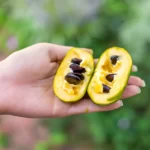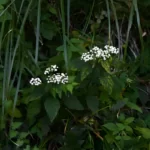Barberry bushes, known for their vibrant foliage and thorny stems, are a common sight in many gardens and landscapes. Despite their aesthetic appeal, these plants have become illegal or regulated in some regions. This article delves into the reasons behind these legal restrictions, focusing on the bush’s impact on agriculture and the environment.
Historical Background of Barberry Bushes
The barberry bush, belonging to the genus Berberis, has a long history of cultivation. Originally native to parts of Europe, Asia, Africa, and the Americas, these bushes have been valued for their ornamental beauty, medicinal properties, and culinary uses. Barberries have been used in traditional medicine and as a culinary ingredient, particularly for their tart berries. Their popularity in landscaping grew due to their hardiness and decorative appeal.
The Problem with Barberry: Agricultural Impact
A key issue with barberry bushes is their role in the spread of stem rust fungus, which affects cereal crops like wheat, oats, and barley. Stem rust is a serious disease that can devastate grain crops, leading to significant agricultural losses. The barberry bush serves as an alternate host for the fungus, enabling it to complete its life cycle and spread more effectively. During the early 20th century, this connection led to widespread stem rust outbreaks in grain-producing regions, directly linked to nearby barberry plants. The agricultural impact was profound, triggering efforts to control and even eradicate barberry bushes in some areas to protect cereal crops.
Environmental Concerns
Beyond their impact on agriculture, barberry bushes pose significant environmental challenges. Many species of barberry, particularly the Japanese barberry (Berberis thunbergii), have become invasive in various regions. These invasive species outcompete native vegetation, altering local ecosystems. They thrive in a range of conditions, from forest understories to open fields, and once established, can create dense thickets that are difficult to remove. This encroachment not only displaces native plant species but can also disrupt local wildlife habitats and change soil chemistry.
The dense thickets formed by invasive barberry can also create ideal conditions for ticks, exacerbating the risk of tick-borne diseases like Lyme disease. The bushes provide a humid microclimate favorable for ticks, thereby indirectly impacting public health.
Legal Actions and Restrictions
In response to these agricultural and environmental concerns, several states and regions have implemented legal restrictions on the cultivation, sale, and distribution of certain barberry species. These regulations often target the invasive Japanese barberry, although other species may also be included. Laws vary by region, with some areas implementing complete bans and others opting for controlled cultivation or sale of specific, less-invasive cultivars.
These legal actions are typically enforced through agricultural or environmental departments, and penalties for non-compliance can include fines or mandatory removal. The aim is to prevent the spread of invasive barberry species and protect both agricultural interests and native ecosystems.
Alternative Landscaping Options
Given the issues associated with barberry bushes, many gardeners and landscapers are seeking alternative plants for their landscapes. Native shrubs and plants are often recommended, as they support local biodiversity and are typically well-adapted to local conditions. Some popular alternatives include native flowering shrubs like dogwood and viburnum, which provide similar aesthetic appeal without the associated risks of barberry bushes.
By choosing native or non-invasive plants, gardeners can contribute positively to their local ecosystems, encouraging a balance of species and reducing the likelihood of inadvertently supporting invasive plant populations.
Current Research and Controlled Cultivation
In recent years, there has been growing interest in developing and promoting varieties of barberry that are less likely to contribute to agricultural and environmental problems. Researchers are focusing on breeding disease-resistant varieties that do not support the stem rust fungus, thereby reducing the risk to cereal crops. Additionally, efforts are being made to cultivate non-invasive barberry cultivars that are less likely to spread uncontrollably in natural ecosystems.
Controlled cultivation practices are also being explored, where specific cultivars are grown under conditions that minimize the risk of becoming invasive. This approach requires careful monitoring and management to ensure that these plants do not escape into the wild and become a problem.
Role of Gardeners and Landscapers
Gardeners and landscapers play a crucial role in managing the spread of invasive species, including barberry bushes. Being informed about local regulations and the environmental impact of plant choices is essential. Gardeners are encouraged to research and select plants that are suitable for their region’s ecosystem and to avoid planting species known to be invasive or harmful to agriculture.
Responsible gardening practices, such as removing existing invasive barberry bushes and replacing them with native or non-invasive alternatives, can significantly contribute to ecological conservation efforts. Landscapers and gardeners are also encouraged to participate in community awareness programs, helping to educate others about the importance of biodiversity and responsible plant selection.
Conclusion
The legality of barberry bushes in certain regions stems from their significant agricultural and environmental impacts. While they have been popular in landscaping, their role in spreading stem rust fungus and their invasive nature have led to restrictions and bans. By opting for native or non-invasive alternatives, gardeners and landscapers can contribute positively to their local ecosystems and agriculture. Ongoing research and responsible gardening practices are key to balancing the desire for beautiful landscapes with the need for environmental conservation and agricultural safety. As we move forward, it’s essential to make plant choices that support the health and sustainability of our ecosystems.




